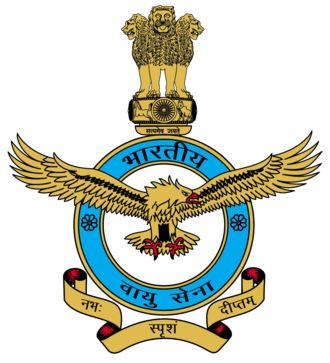IN A 2:1 MAJORITY SUPREME COURT HOLDS THAT AIR FORCE SCHOOLS DO NOT FALL UNDER THE AMBIT OF ‘STATE’ UNDER ARTICLE 12

Introduction
On May 21st, 2025, the Bench of the Supreme Court comprising of Justice Masih, Justice Oka, Justice Amanullah, dismissed the appeals arising out of the Decision of a Division Bench of Allahabad High Court, while holding that the Air Force School will not fall under the definition of ‘State or authority’ under Article 12 of the Constitution of India. The Majority Decision was given by Justice Masih and Justice Oka, and the Dissenting Decision was given by Justice Amanullah while hearing the case titled “Dileep Kumar Pandey v. Union of India and Others (2025 SCC OnLine SC 1192)”.
Factual Background
The First Appellant was appointed as a trained graduate teacher in physical education through a selection process conducted by IAF officers. He was on probation, which was extended periodically. In 2007, he was informed that he was rendered surplus as the school chose to appoint a more qualified teacher. He was offered either a further contractual position or termination of service by 3rd July 2007. The Appellant filed a Writ Petition claiming confirmation of his appointment. A Single Judge allowed the petition, holding that the school qualified as ‘State’ under Article 12 of the Constitution and could be subject to Writ Jurisdiction. Subsequently, the Division Bench held that the writ petition was not maintainable as the School was not ‘State’ under Article 12.
The other Appellant, was appointed as a postgraduate teacher in 1993 and later, officiating Principal in 2003, faced disciplinary action allegedly instigated a Respondent, who assumed the role of Principal without formally taking charge. Following complaints, he filed two Writ Petitions challenging her appointment and disciplinary action. Although the Single Judge found the petitions maintainable, no relief was granted due to pending proceedings. Ultimately, the Writ Petitions were dismissed, and the Second Appellant was terminated. His final Appeal was rejected on grounds of maintainability.
Arguments Advanced by Parties
The Appellants’ Senior Counsel argued that Air Force Schools, primarily established to promote education among IAF personnel and their families, are under the dominant administrative and financial control of the Indian Air Force (IAF). He highlighted that the schools are fully financed by the IAF, with buildings constructed using public funds authorized by the Ministry of Defence, and staff salaries determined by Air Force Headquarters. Emphasizing the IAF’s pervasive control through the Education Code and the Command Schools Management Committee, he contended that the High Court erred in finding no Government control or funding. Therefore, he asserted that Air Force Schools qualify as “State” under Article 12 of the Constitution and are subject to Writ Jurisdiction under Article 226.
On the other hand, the Learned ASG argued that Air Force Schools are governed by “Non-Public Funds” or “Regimental Funds” of the Indian Air Force, derived from sources like tuition, admission, and activity fees, and not from direct government funding. While the Ministry of Defence allocated initial funds for establishing schools, ownership of land and buildings remains with the local military administration. She emphasized that Air Force Schools are not public authorities under Article 12, relying on Supreme Court judgments including Union of India v. Chotelal [(1999) 1 SCC 554], R.R. Pillai (Dead) through LRs. v. Commanding Officer, Headquarters Southern Air Command [(2009) 13 SCC 311], and Army Welfare Education Society v. Sunil Kumar Sharma [2024 SCC OnLine SC 1683], which she claimed directly apply.
Court’s Decision
The Court held that there was no evidence indicating any real control over the administration or management of the school in question by the Indian Air Force (IAF) Headquarters. Even if some funding came from the Army Welfare Society, it does not establish that the IAF or the government had substantial or overarching control over the school’s functioning.
The Court clarified that the school is operated by the Indian Air Force Educational and Cultural Society, which is an independent private organization registered under the Societies Registration Act, 1860. Therefore, the connection between the teachers (Appellants) and the School is purely based on a private employment contract.
Even if there was a breach of this contract, the Court held that such a matter does not involve Public Law principles and thus cannot be addressed through writ petitions under Constitutional Law. Since the School is not governed by any statutory framework, and its internal Education Code has no legal authority, the institution does not qualify as a “State” under Article 12 of the Constitution. Hence, Writ Jurisdiction under Article 226 is not applicable.
In conclusion, the majority opinion dismissed the Appeals but clarified that the appellants could explore other legal remedies available to them under contract law.
- Dissenting Opinion
Justice Amanullah emphasized that the school was created as a welfare initiative by the Indian Air Force (IAF) specifically to educate the children of IAF personnel. This was not a private endeavor, but a policy decision taken at the top levels of the IAF, which was also responsible for setting up the infrastructure, financing, and administration of the school. Each school had a managing committee comprising IAF officers, and funding came from both student fees and welfare funds contributed by IAF members. The School was constructed on land owned by the IAF, with funds from IAF sources.
Though the School admitted both IAF and non-IAF children, Justice Amanullah noted that the act of providing education was a public function affecting society at large. The IAF’s involvement in recruitment, probation extensions, pay scales, and even disciplinary actions—including terminations—showed that it had comprehensive, day-to-day control over the School’s functioning. A 2009 Government press release further confirmed this level of control, stating that the newly appointed Director General (Administration) of the IAF had supervisory authority over Air Force schools.
He also challenged the label “Non-Public Funds,” noting that although these funds were not called public, they came from contributions by IAF units and were supplemented by Regimental Funds. Importantly, these funds received Government support in kind—such as land, infrastructure, and tax exemptions, indicating indirect state support. Even though the School’s Education Code lacked statutory force, this did not weaken the argument for Writ Jurisdiction, since control and funding from the IAF were pervasive.
Justice Amanullah concluded that due to the IAF’s deep involvement, both functionally and financially, the School and its governing committee qualified as “Other Authorities” under Article 12 of the Constitution. Hence, they were subject to Writ Jurisdiction under Article 226, as they performed a public function under the administrative and financial control of a state instrumentality.
Conclusion
While exploring the ambit of ‘State’, this Decision discusses the fine line between public law and the private/contractual element, the nature of transaction being carried out, that needs to be considered when determining the nature of an authority.
Yash Hari Dixit
Associate
The Indian Lawyer and Allied Services
Please log onto our YouTube channel, The Indian Lawyer Legal Tips, to learn about various aspects of the law. Our latest Video, titled What is Death Sentence? Meaning, Process & Rights in India Explained | Advocate Sushila Ram Varma | can be viewed at the link below:





































Leave a Reply